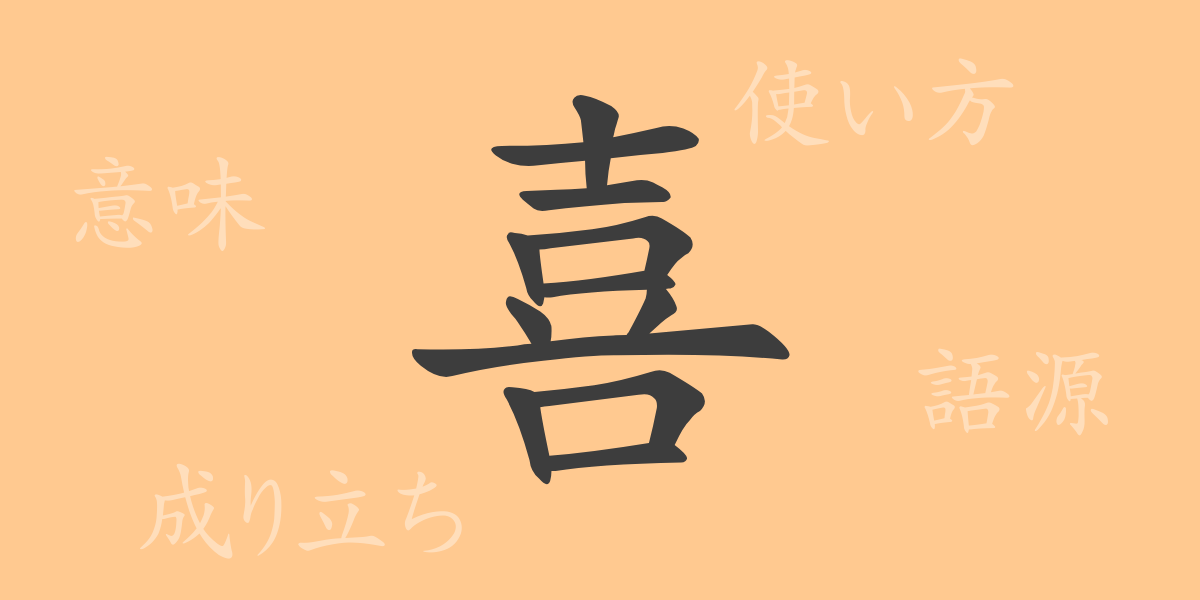The beauty of the Japanese language is also reflected in its delicate characters. The kanji “喜” (き, “ki”), a commonly used character, is essential to expressing emotions in Japanese culture. This article delves into the origins of “喜”, its meaning, usage, pronunciation, and explores idioms and phrases that include “喜”. Understanding the role of “喜” in Japanese culture allows us to glimpse the rich emotional world behind the words.
The Origins (語源) of 喜
The character “喜” originated in ancient China. Evolving from pictographs, this kanji initially depicted the act of laughing with one’s mouth wide open. Over time, its meaning expanded to encompass not just laughter, but a general sense of happiness and joy. This shift reflects how people have evolved language to express their emotions more richly.
The Meaning and Usage of 喜
The primary meanings of “喜” are “joy” and “enjoyment,” referring to positive emotions. In Japanese, this character is used in a wide range of expressions such as “喜ぶ” (よろこぶ, “yorokobu” – to be pleased), “喜び” (よろこび, “yorokobi” – joy), and “喜劇” (きげき, “kigeki” – comedy). It is also commonly found in people’s names, conveying a wish for a life filled with happiness.
Pronunciation, Stroke Count, and Radical of 喜
“喜” is one of the most familiar kanji in the Japanese language.
- Pronunciation: The on’yomi (音読み) reading is “キ” (“ki”), and the kun’yomi (訓読み) readings are “よろこ.ぶ” (“yorokobu”) and “よろこ.ばす” (“yorokobasu”).
- Stroke Count: 12 strokes
- Radical: 口部 (こうぶ, “koubu”) – the “mouth” radical
Idioms, Phrases, and Proverbs Using 喜 and Their Meanings
There are several idioms and phrases that include “喜”, such as:
- 喜怒哀楽 (きどあいらく, “kidoairaku”): A phrase that represents the four fundamental human emotions—joy, anger, sorrow, and pleasure.
- 喜色満面 (きしょくまんめん, “kishokumanmen”): A phrase describing the state of one’s face brimming with joy.
- 一喜一憂 (いっきいちゆう, “ikkiichiyuu”): A phrase meaning to alternate between joy and worry.
These expressions are frequently used in everyday conversation and literary works, helping to convey the nuances of human emotions.
Conclusion on 喜
The kanji “喜” symbolizes the charm of the Japanese language in its ability to express emotions richly. This single character reflects what people cherish and find valuable. A deep understanding of Japanese culture and language is incomplete without understanding kanji like “喜”. Through this exploration, you may have felt the layers of meaning that “喜” holds.

























